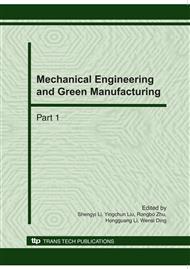p.1886
p.1891
p.1896
p.1901
p.1906
p.1911
p.1916
p.1920
p.1925
Simulation of Suspension-Tire System Model Based on Rear Axle of Twist Beam
Abstract:
With the intention of researching suspension’s effect on the self-excited vibration of tire, according to the characters of polygonal wear, the twist beam suspension of car PassatB5 was simplified to proper mechanical model in the method of FEA. Then, making the coupling of lateral friction self-excited vibration of tire and draw-wrest operation of lengthways pendulum arm taking the previously built friction coefficient model into account which could cause the self-excited vibration of tire, besides the velocity of car’s driving, another exciting source could be found in this model.
Info:
Periodical:
Pages:
1906-1910
Citation:
Online since:
October 2010
Authors:
Keywords:
Price:
Сopyright:
© 2010 Trans Tech Publications Ltd. All Rights Reserved
Share:
Citation:


